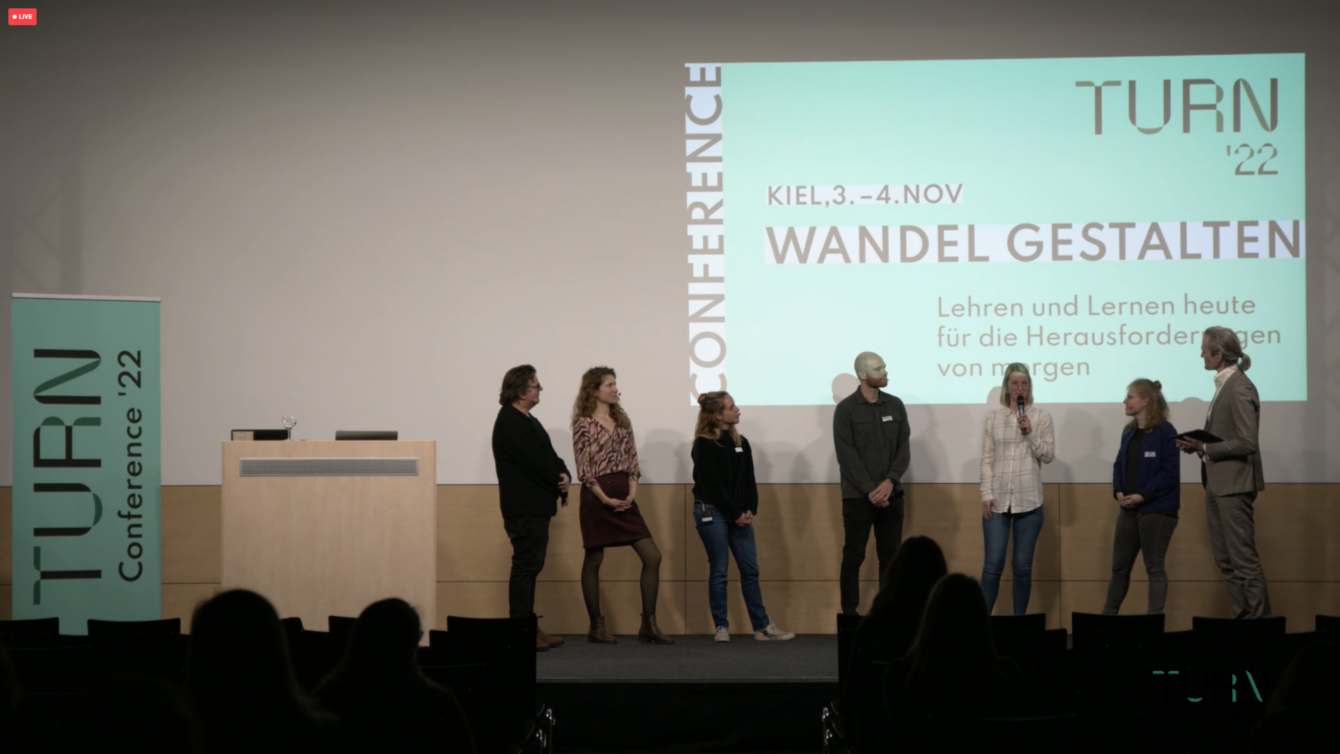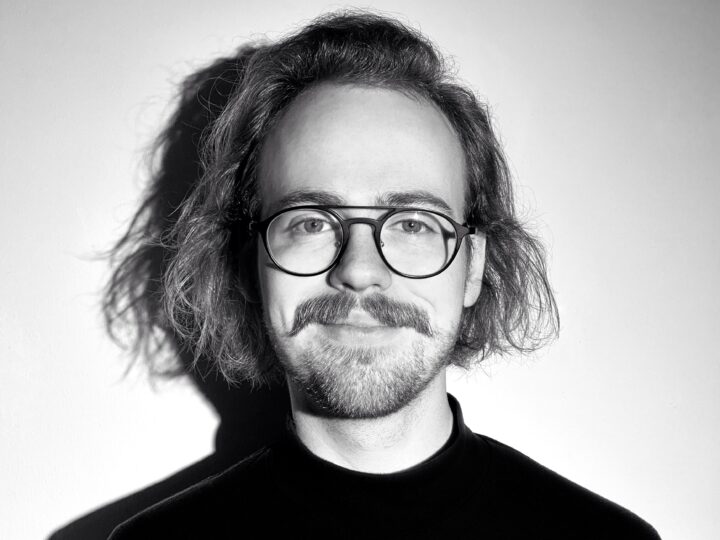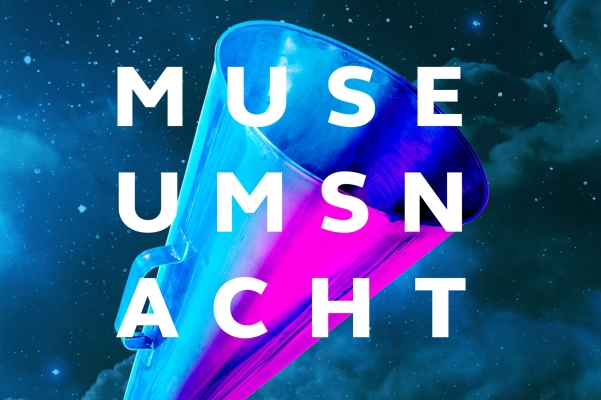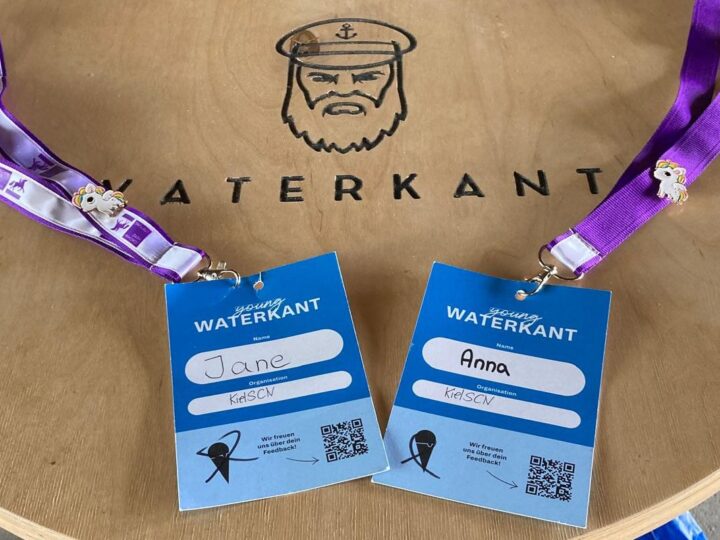TURN Conference 2022 in Kiel
Education in transformation
On November 3rd and 4th, the TURN Conference 2022 took place in Kiel. Following the topic “Shaping Change – Teaching and Learning Today for the Challenges of Tomorrow”, stakeholders from universities and universities of applied sciences, but also from society, came together. The focus was on the discussion of teaching-learning concepts, practical examples, student projects, research results and teaching development projects that can contribute to empowering students and graduates to actively shape social change. KielSCN participated in the conference with a symposium on visual science communication and interactive learning.
What is the Significance of Visual Science Communication?
KielSCN speaker Tom Duscher opened the symposium with his contribution on visual science communication. Here he addressed the significant role that visual design plays in communicating scientific topics in our media-driven society today. The challenge for visual science communication, he said, is to find a representation that is both correct in terms of content and easy to comprehend, while at the same time being aesthetically appealing and fascinating. Interactive media offer great opportunities for this.
He explained that information design focuses on the communication and design of the underlying data. Through graphic representation, an overview, context, or comparison of complex information should be presented as nonverbally as possible. To make the complexity of reality and extensive data sets comprehensible, information design uses visual metaphors. After all, data alone is not yet information. Duscher continues: “According to the cartographer Edward Tufte, good information design should make the clarity of thought visible. Excellent information design, on the other hand, achieves much more: it is precise in terms of content as well as analysis, and at the same time it is emotionally as well as formally aesthetically appealing and clear.”
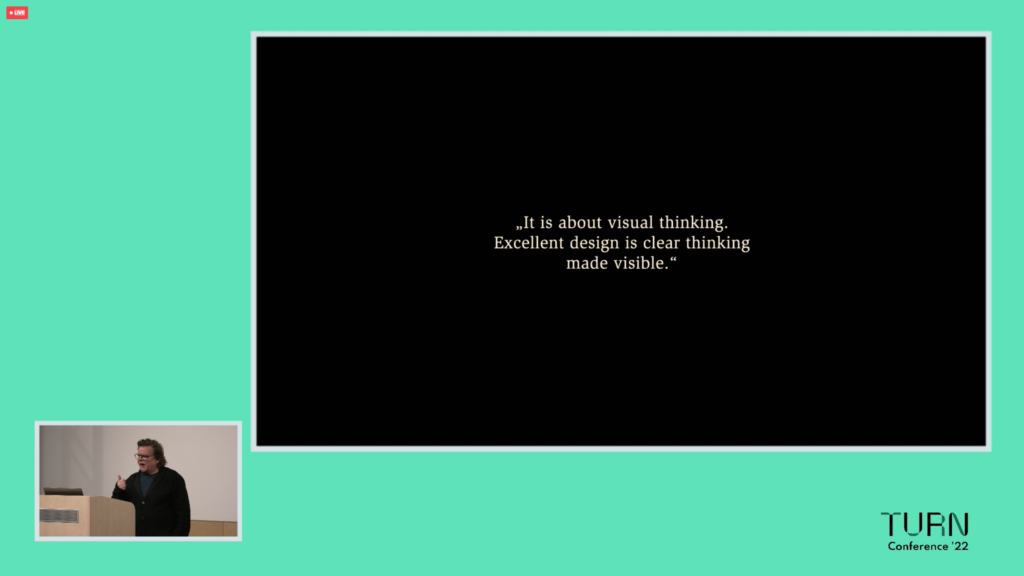
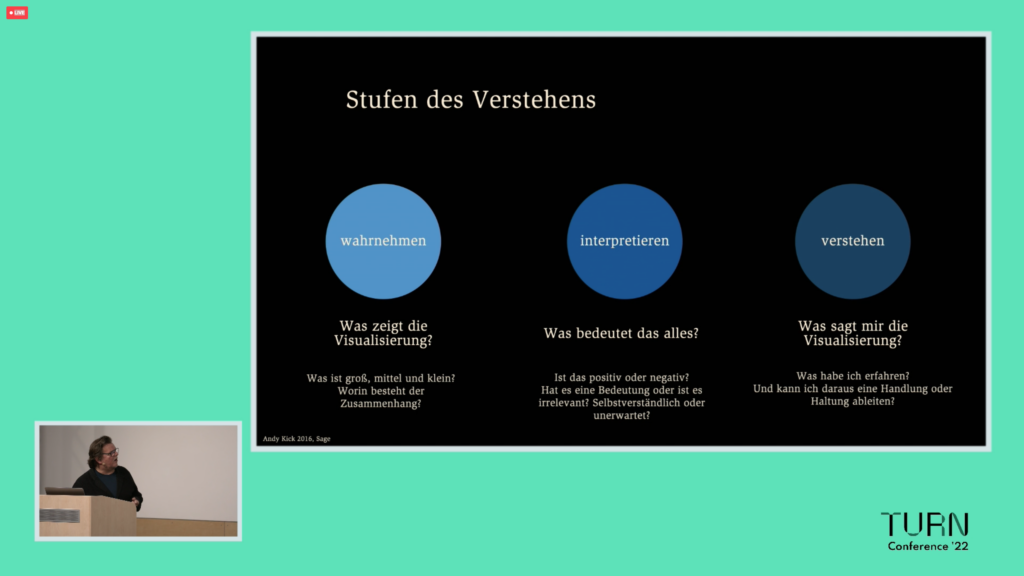
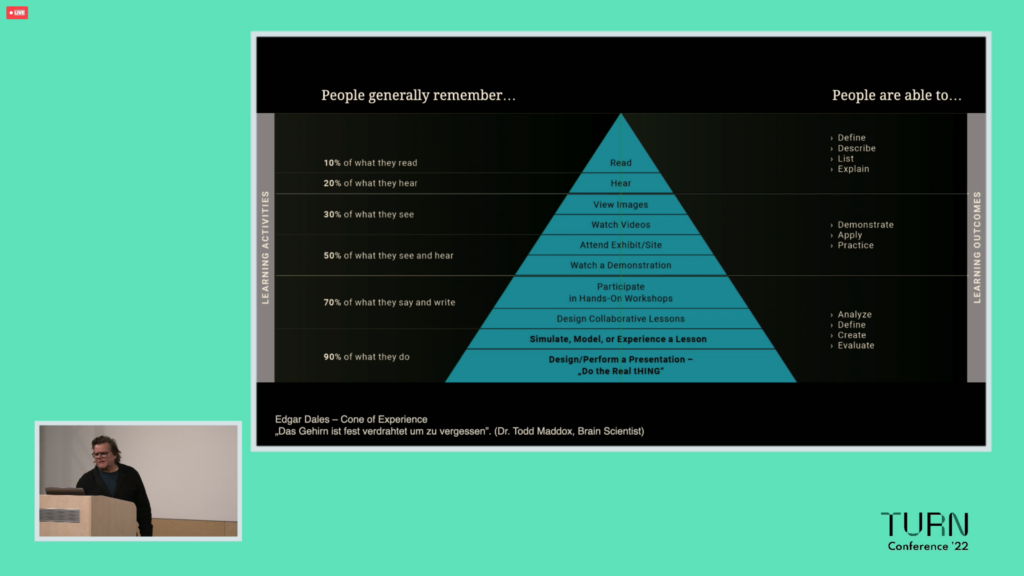
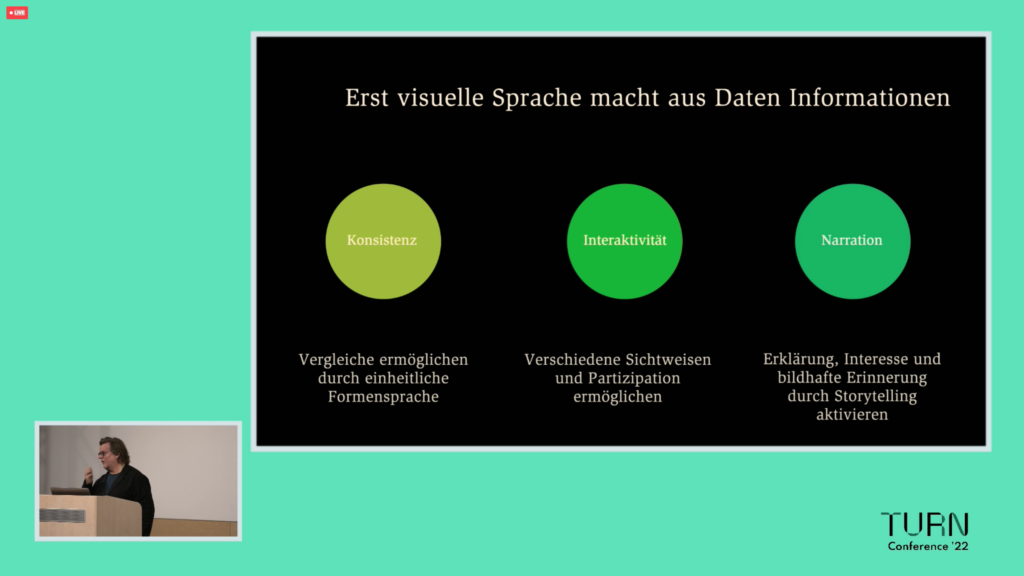
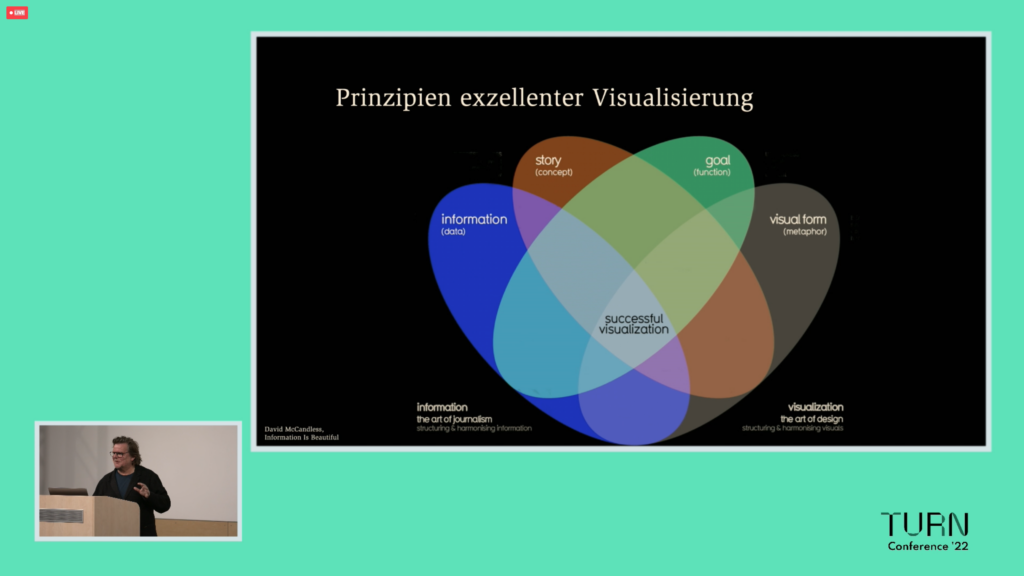
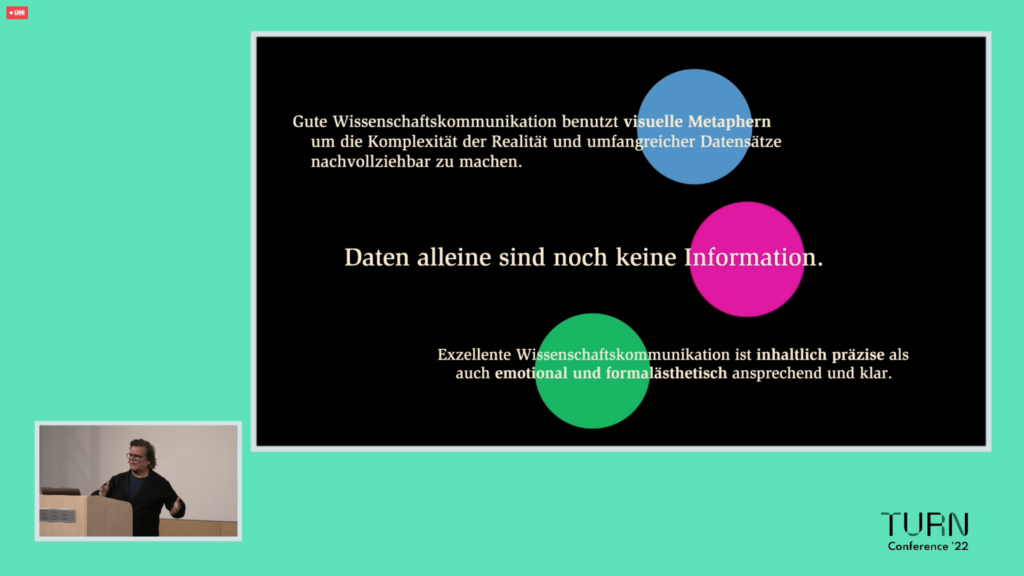
Presentation of the Learning App “Meet The Metaorganism”
In the following contribution, Susanne Landis and Manuel Reitz from the Science Communication Lab presented the digital learning app “Meet The Metaorganism”, which was developed in intensive coordination and collaboration with the scientists of the Collaborative Research Center Origin and Function of Metaorganisms.
When developing the tool, the focus was on the question of how students of the life sciences can inform themselves visually and sustainably about current interdisciplinary research. In the Science Communication Lab, scientists* and designers* work closely together, which has a very positive influence on the quality of the app, both in terms of depth of content and visual presentation. The app is based on the latest findings in microbiome research and includes memorable infographics as well as animations that present the topics of coevolution, microbial communities and the immune system in a varied way. The app is currently being finalized and will be freely available on the internet in the future in order to be available to as many biology students and people interested in the subject as possible.
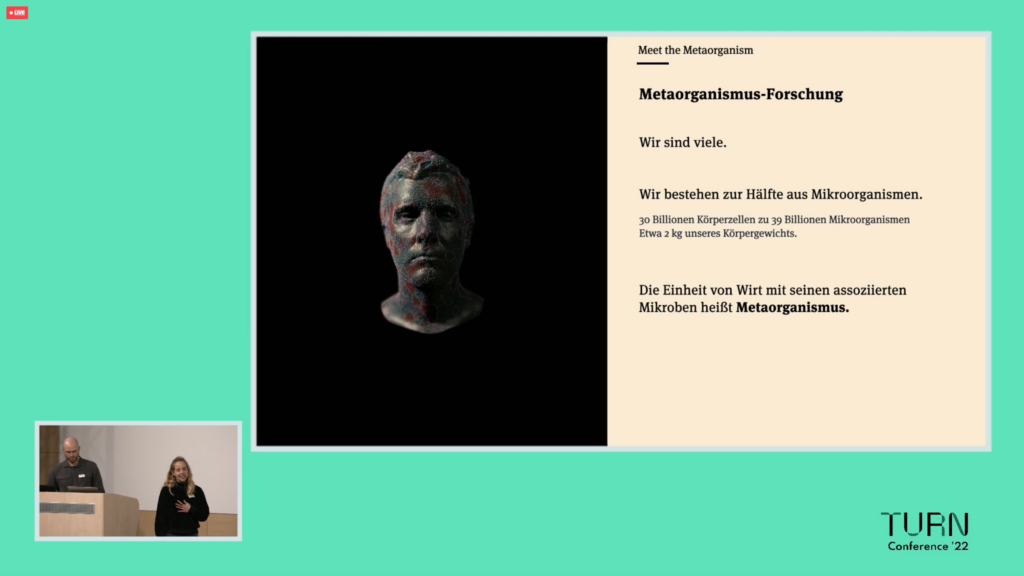
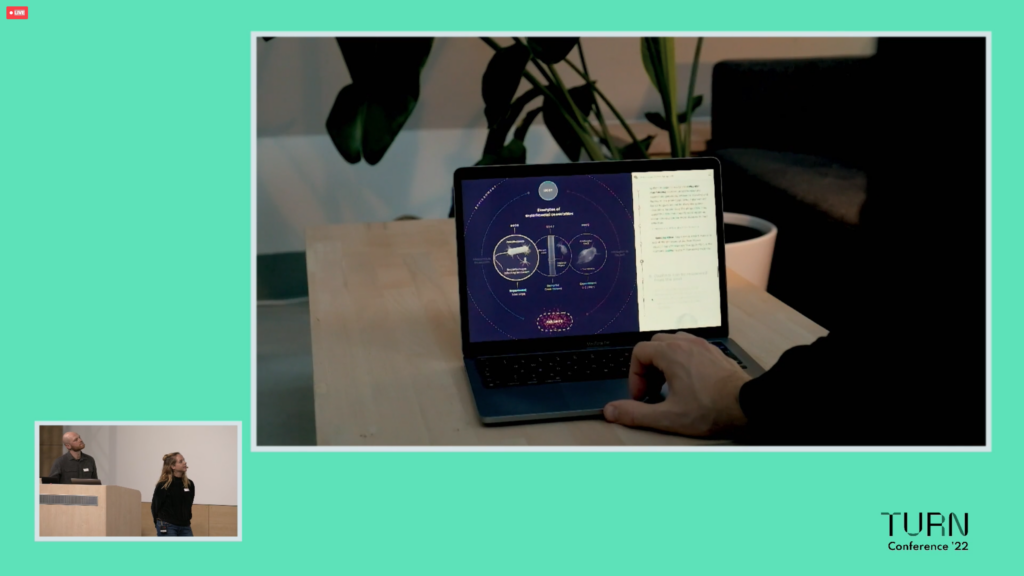
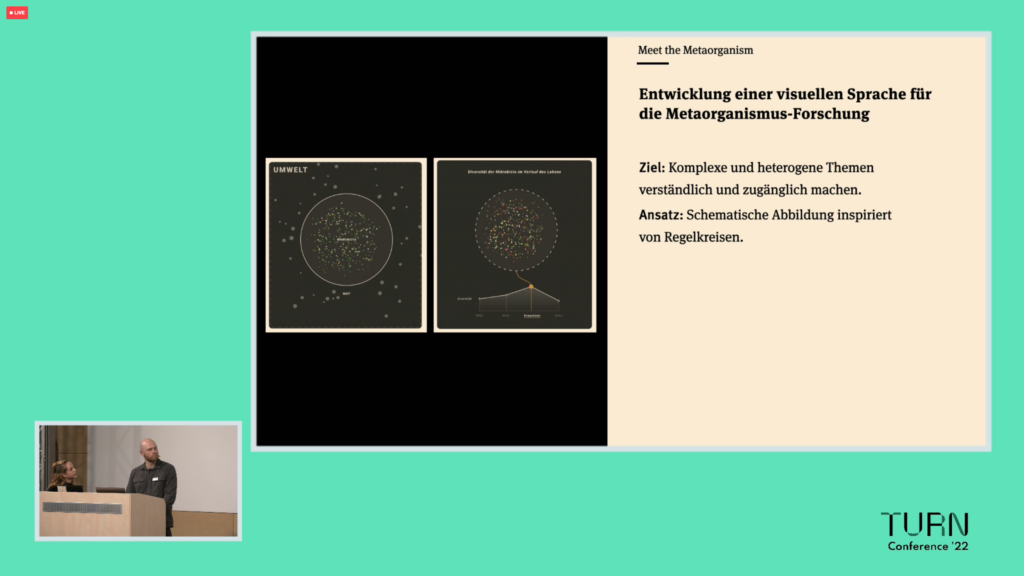
Innovation through collaboration
Scientists from the Collaborative Research Center Origin and Function of Metaorganisms at Kiel University and didactic experts at IPN Kiel supported the development of the learning tool in a collaborative design process. KielSCN Junior PI Carolin Enzingmüller provided a behind-the-scenes look at this interdisciplinary collaboration in her presentation “Innovation through Collaboration.”
Collaborative design describes a process in which individuals from different backgrounds use their expertise, ideas, and resources to work toward a common design goal, iteratively going through analysis, ideation, and testing (Zamenopoulos, & Alexiou, 2018; Sanders & Stappers, 2008). Overall, there are few case studies to date that present and discuss concrete approaches to collaborative design of (learning) media. However, the few existing studies show that such design approaches foster creativity, but at the same time come with specific communicative and organizational challenges (Chiu, 2002; Stempfle & Badke-Schaub, 2002).
At the TURN Conference, Carolin Enzingmüller reported on the collaborative development process behind the learning tool. On the one hand, she provided insights into how the interdisciplinary team from the fields of science, design, and didactics merged knowledge and expertise. But she also showed how the target group was involved in the development of the learning tool. Finally, she presented possible opportunities and challenges as well as best practice examples for university practice.
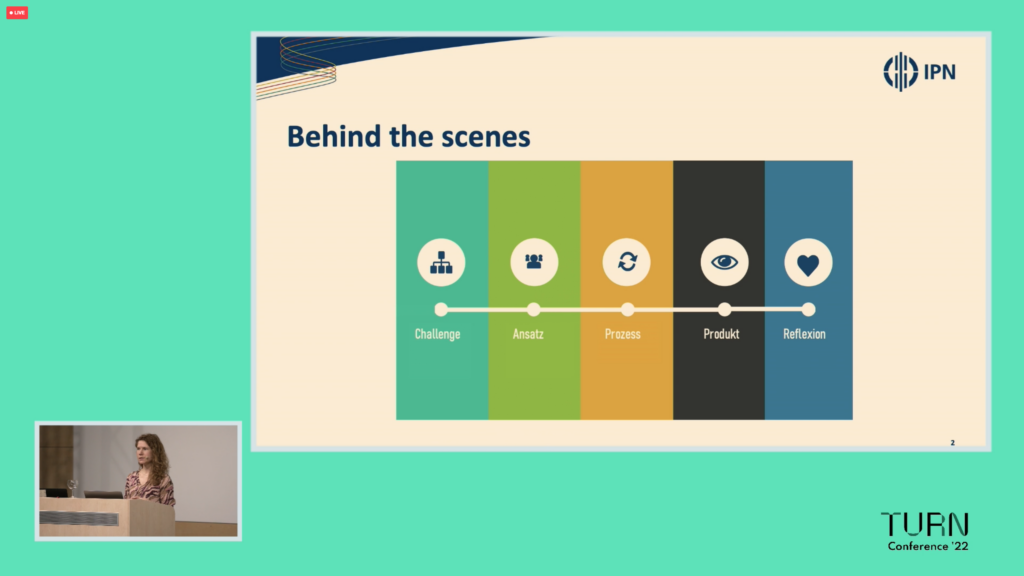
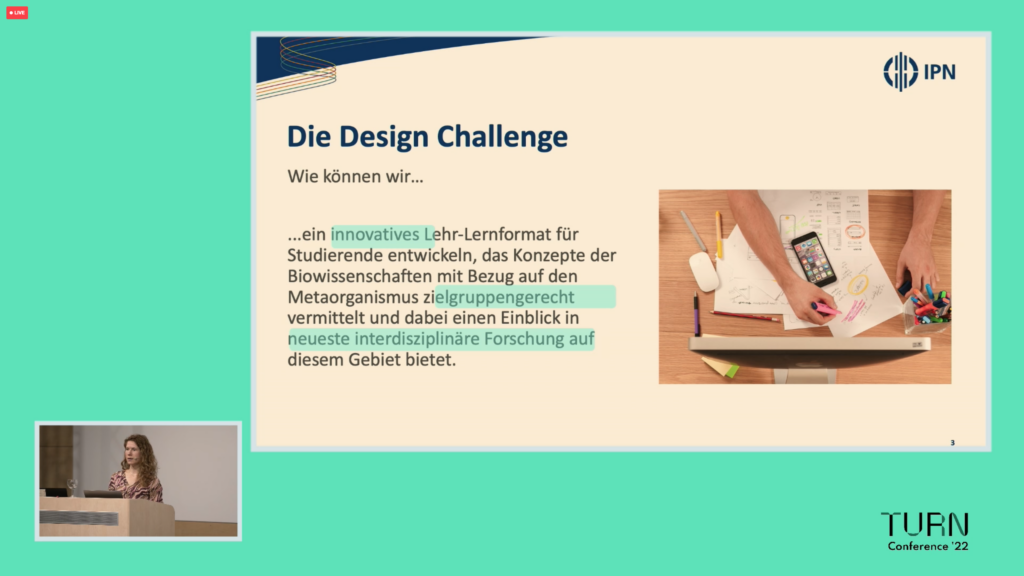
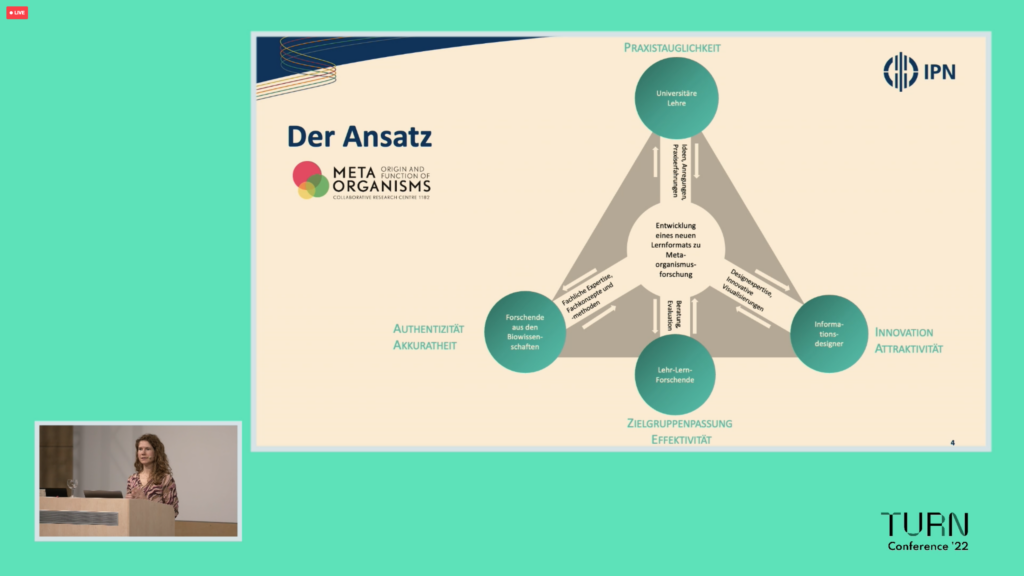
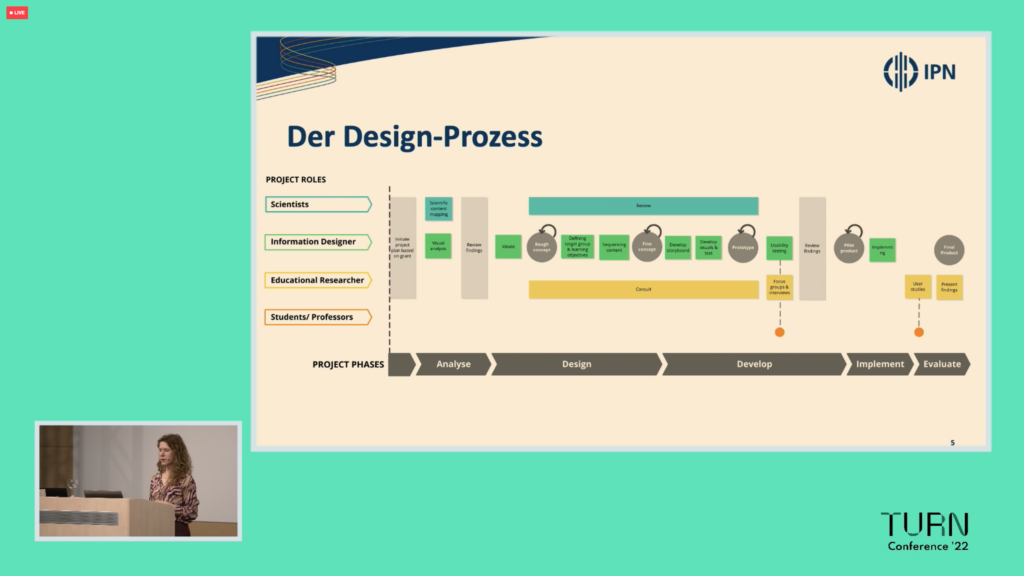
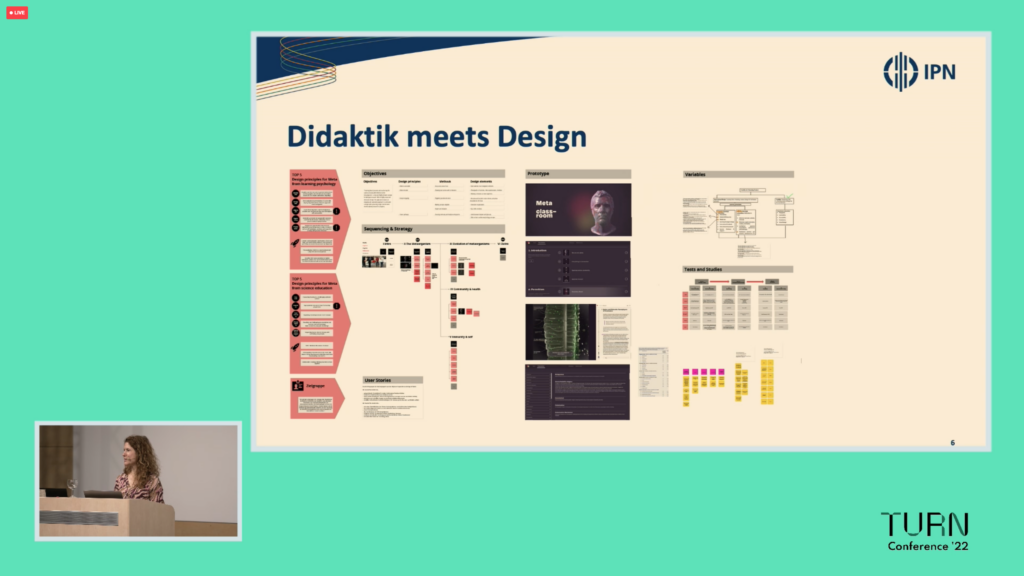
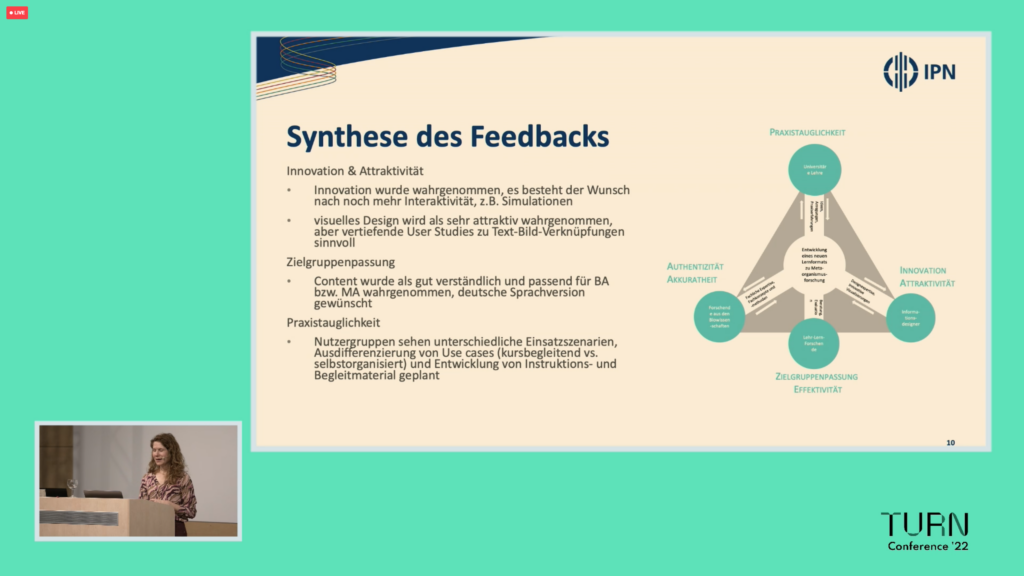
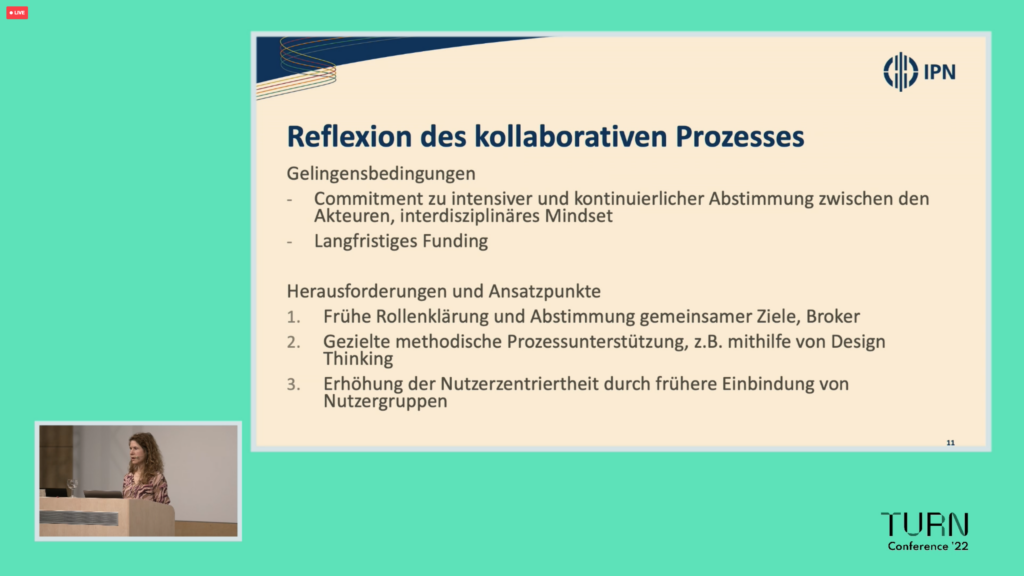
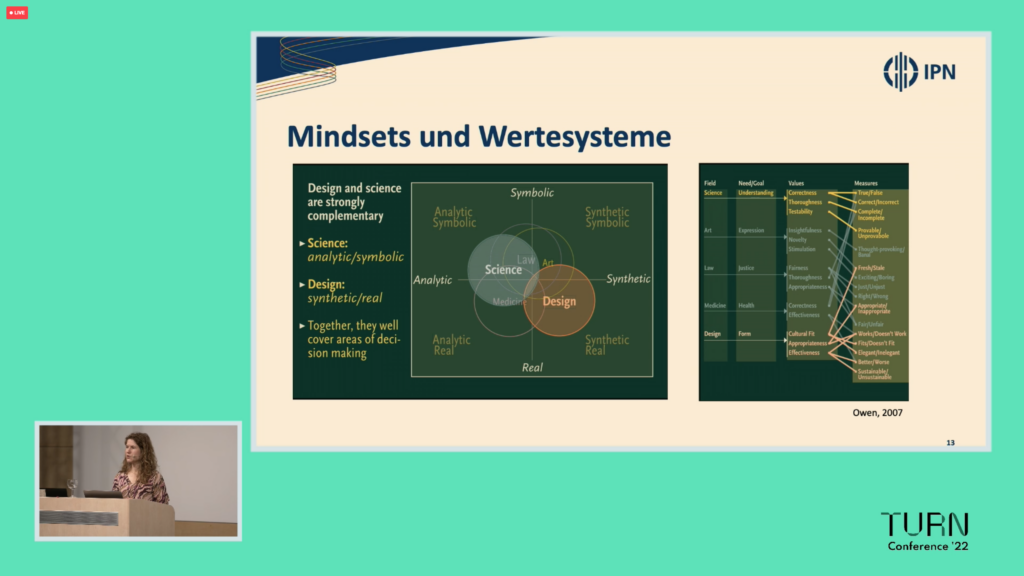
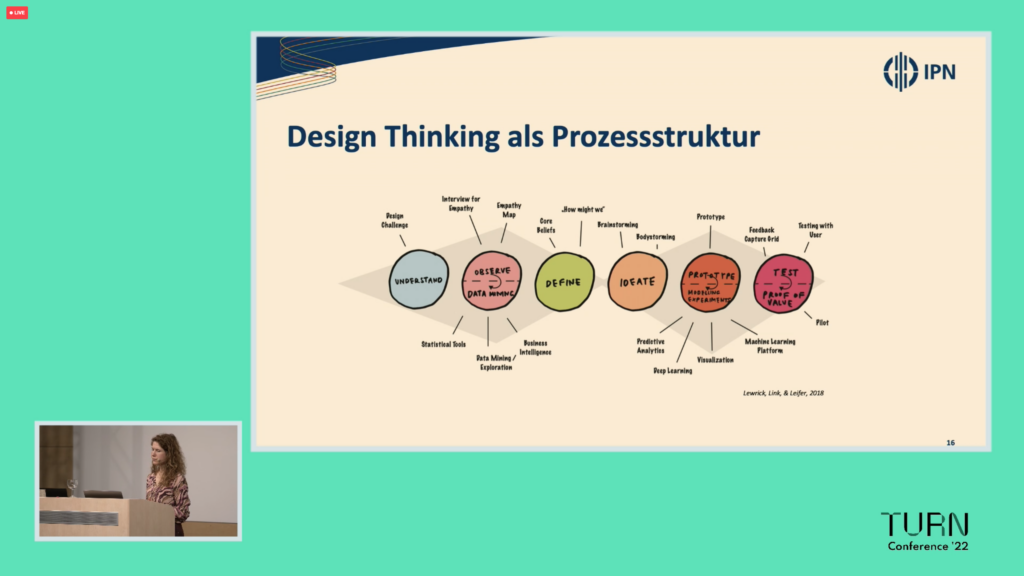
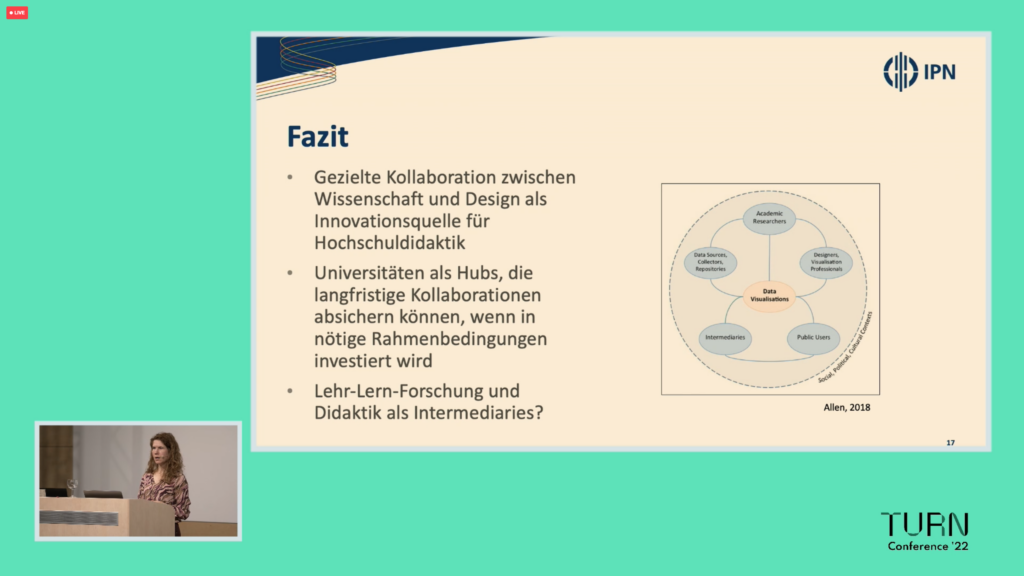
New Perspectives for the Interaction of Design and Education Beginning at the Student Level
The KielSCN doctoral students Anna Vollersen and Julia C. Ahrend then presented experiences from seminar practice with students under the heading “Learning From Each Other and Designing With Each Other”. They focused on the opportunities, experiences and implementation possibilities of the inter- and transdisciplinary collaboration of design and education already during the course of studies.
So far, KielSCN senior PI Ilka Parchmann has initiated such encounters between different disciplines in two modules for students studying to become teachers in Kiel. Both modules were presented by the speakers in their contribution. With the support of designers, for example, the students translate subject content into formats such as Escape Rooms, or they collaborate with expert academics to create offerings for extracurricular learning venues. Anna Vollersen and Julia C. Ahrend also provided insights into the semester project PopUp-Science of the Muthesius University of Art and Design before answering questions from conference participants.
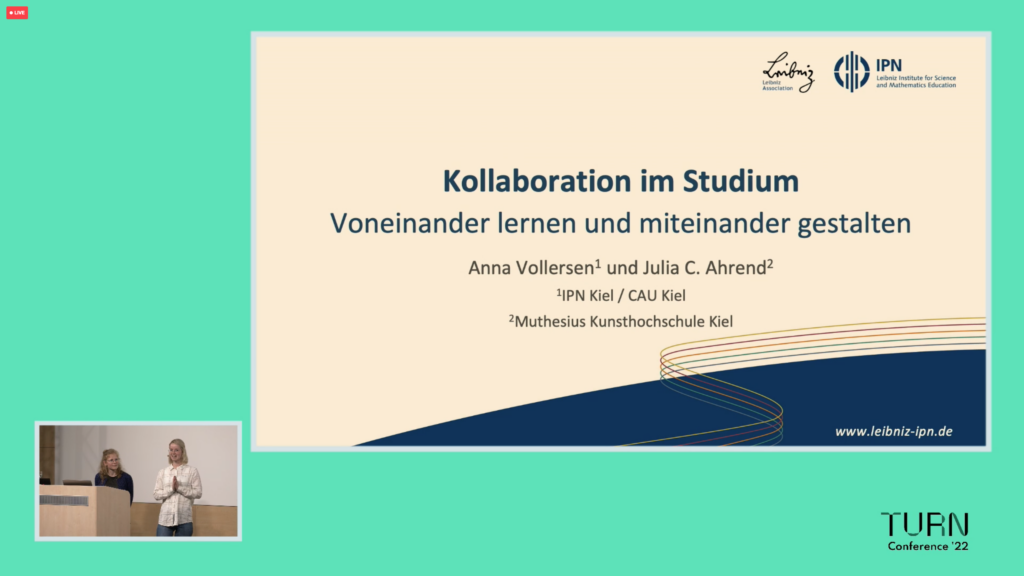
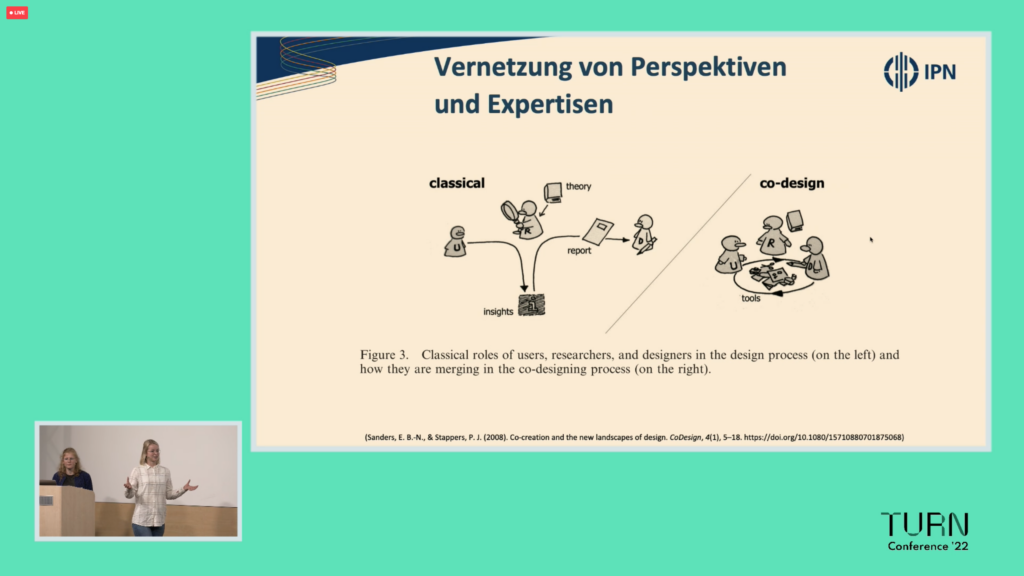
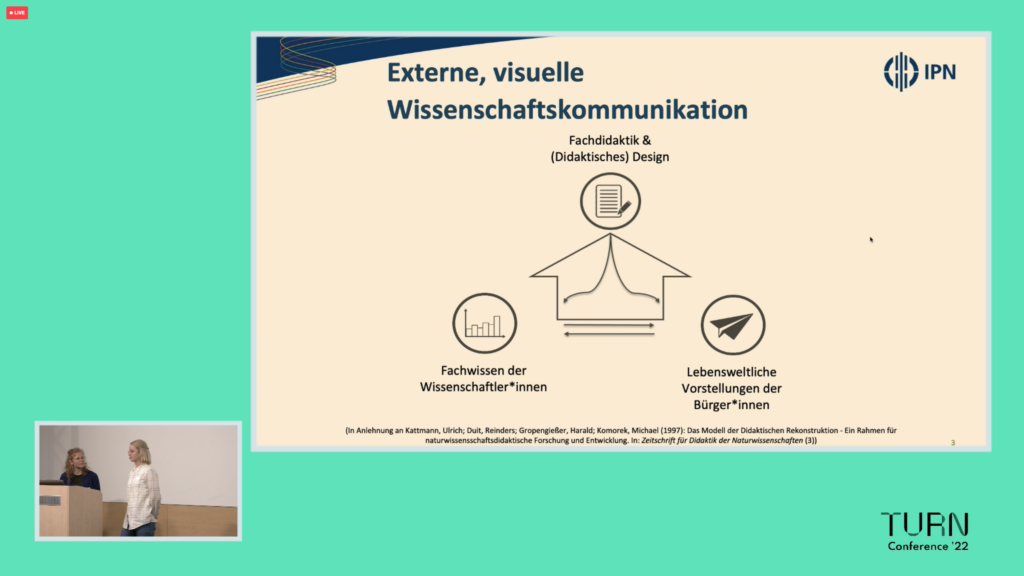
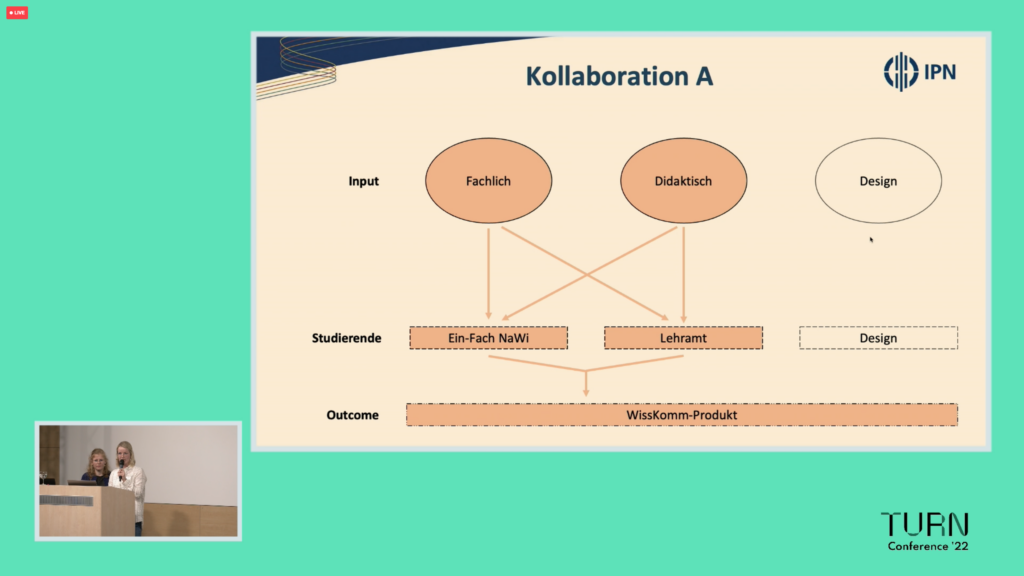
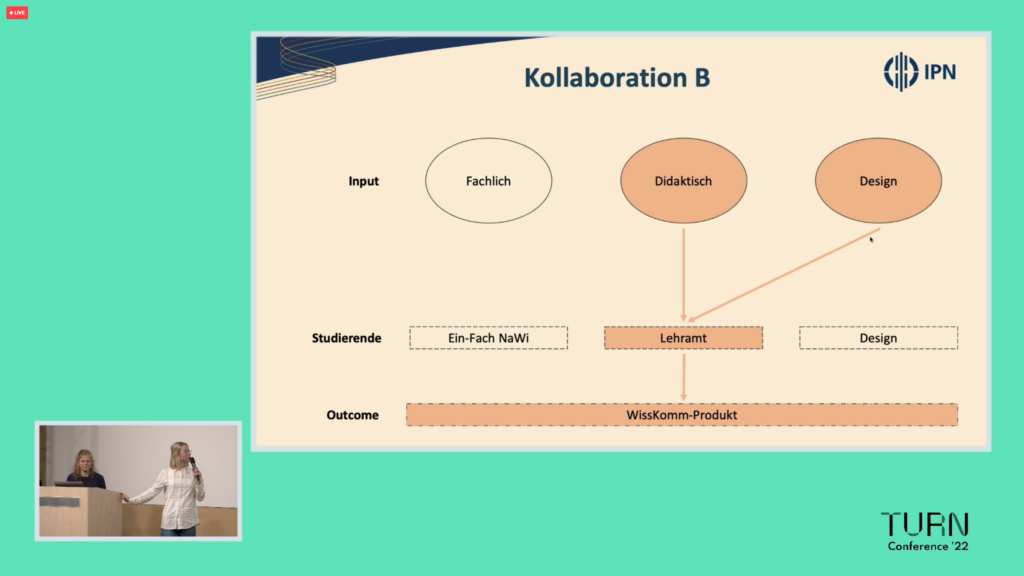
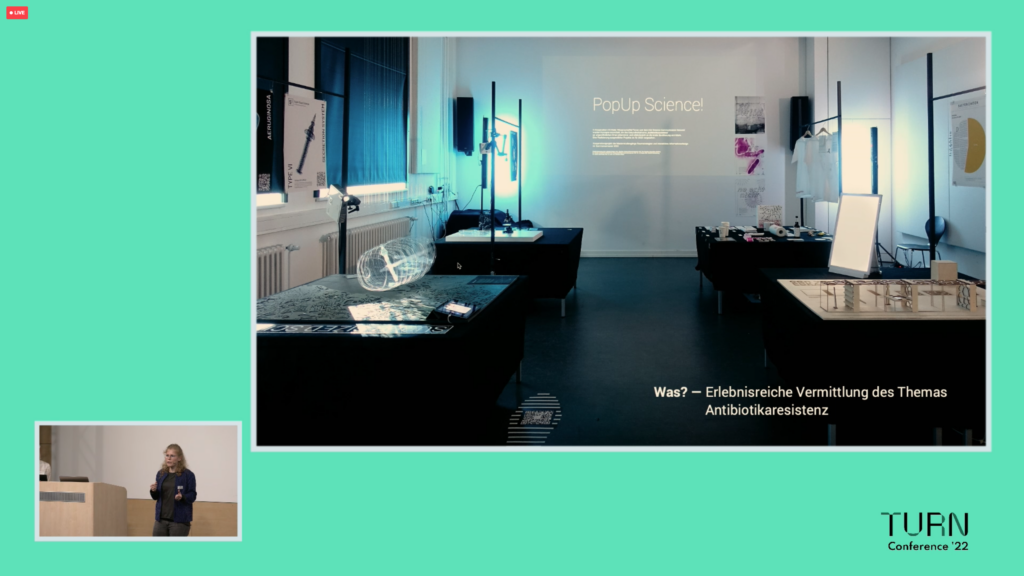
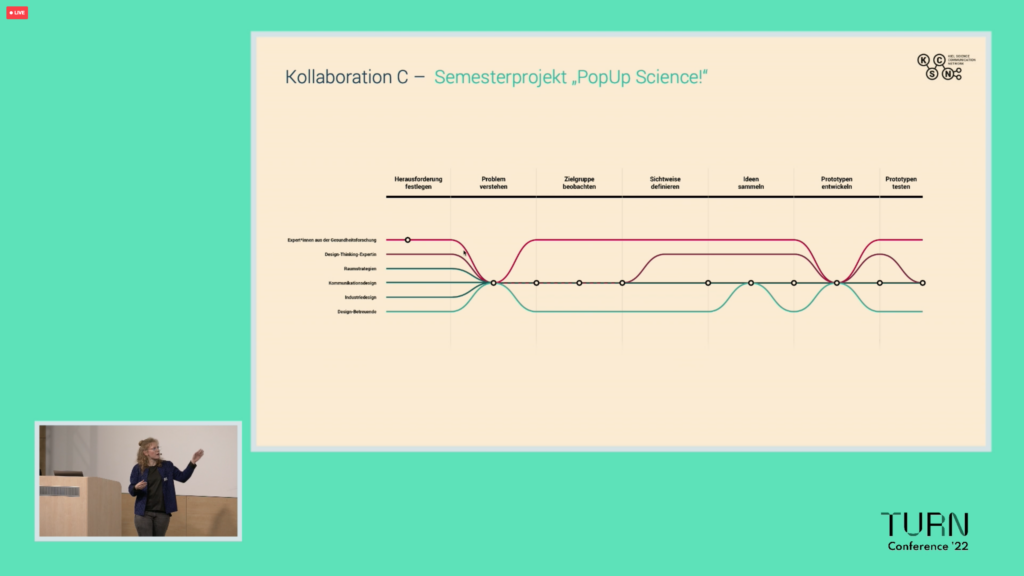
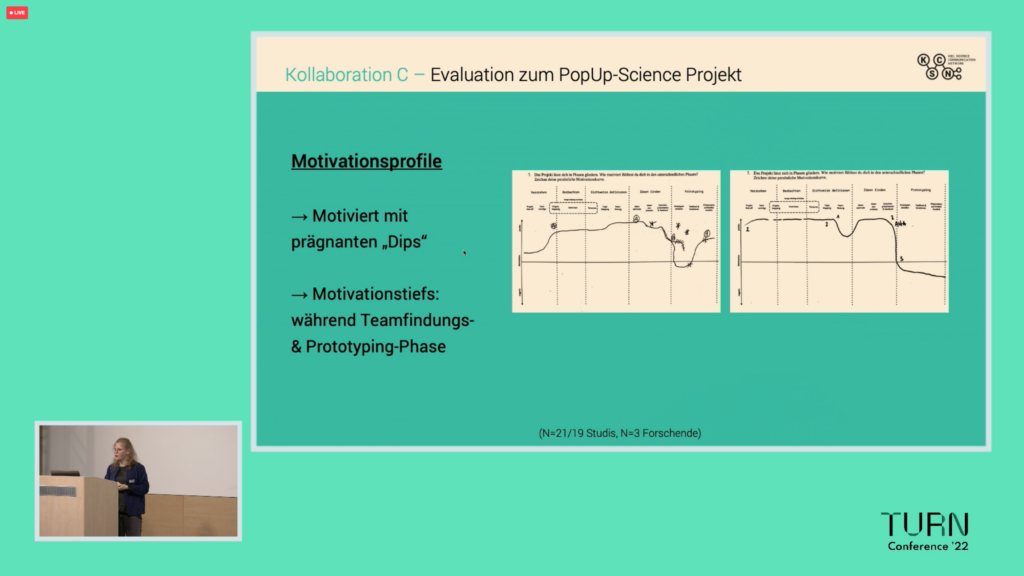
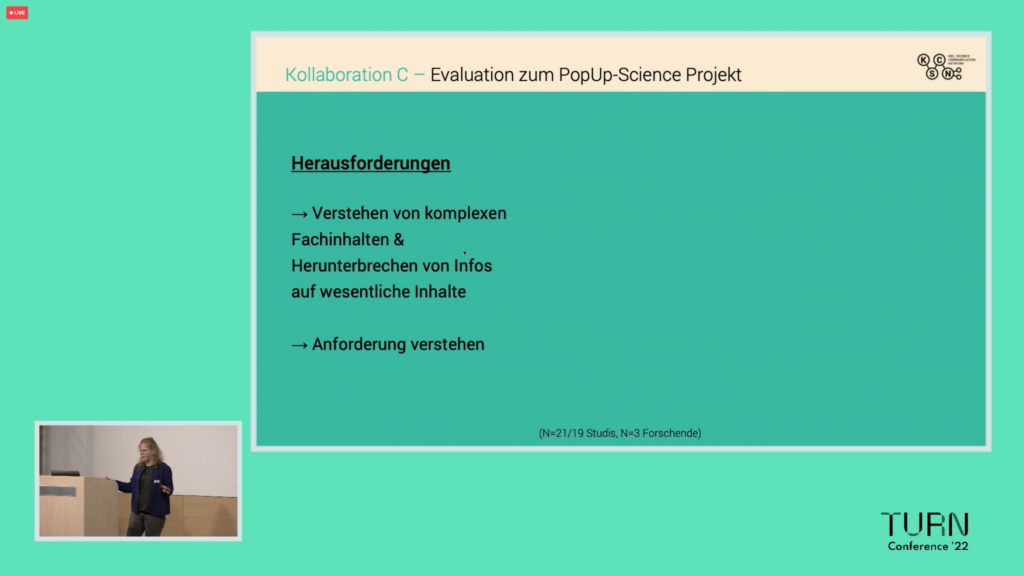
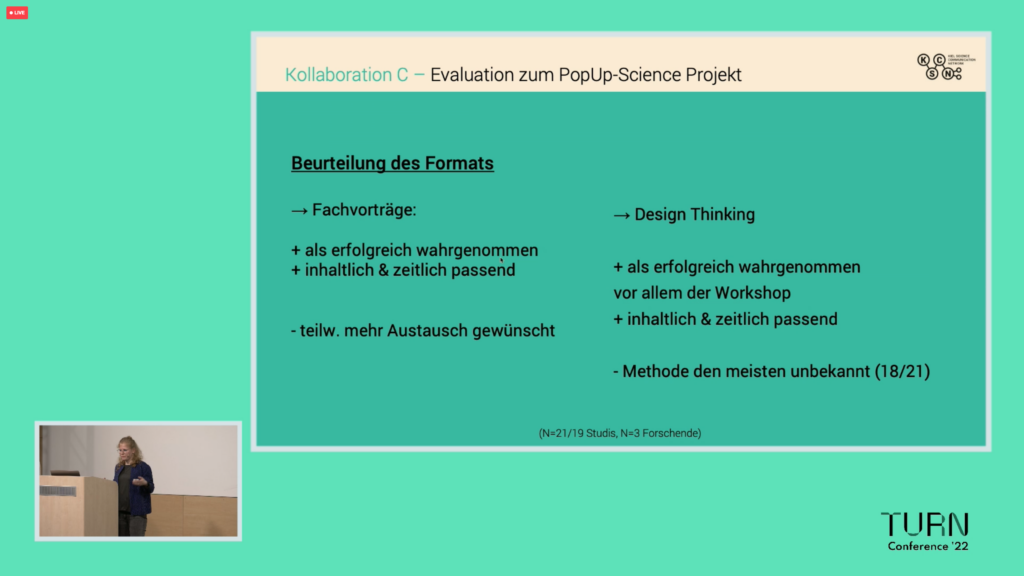
About the TURN Conference
The TURN Conference is an annual exchange opportunity on the topic of teaching and learning. TURN stands for change of perspective, courage to change, openness and departure. The conference series, which will kick off in Kiel on November 3-4, 2022, was initiated by the Stiftung Innovation in der Hochschullehre, which also provides financial support. Each year, a different university (or university cooperation) hosts the conference. This year’s hosts were Kiel University of Applied Sciences and Kiel University.
